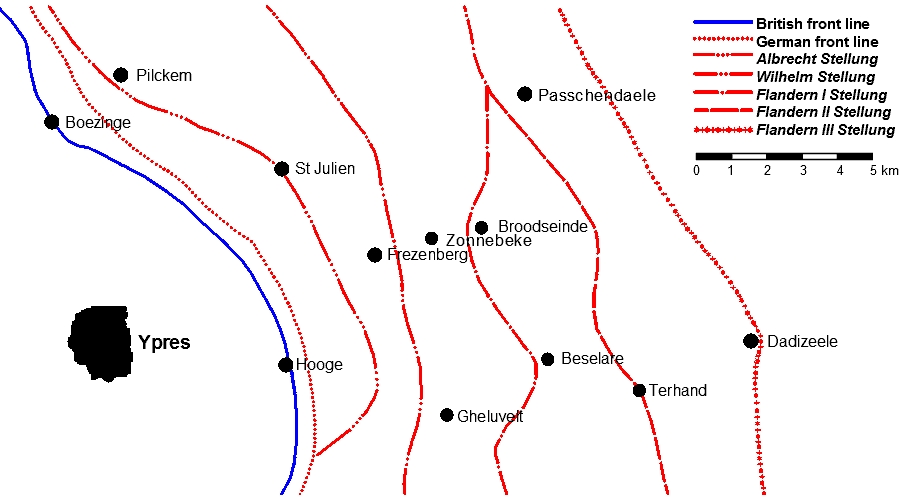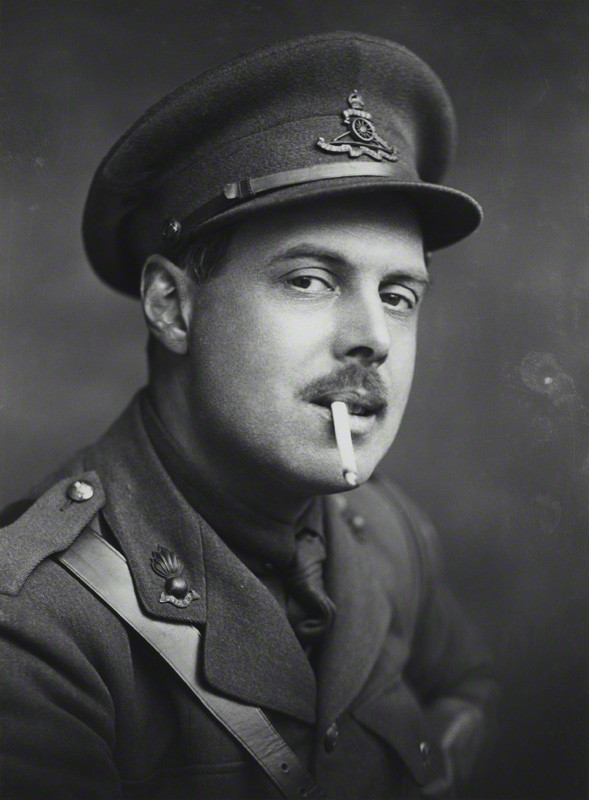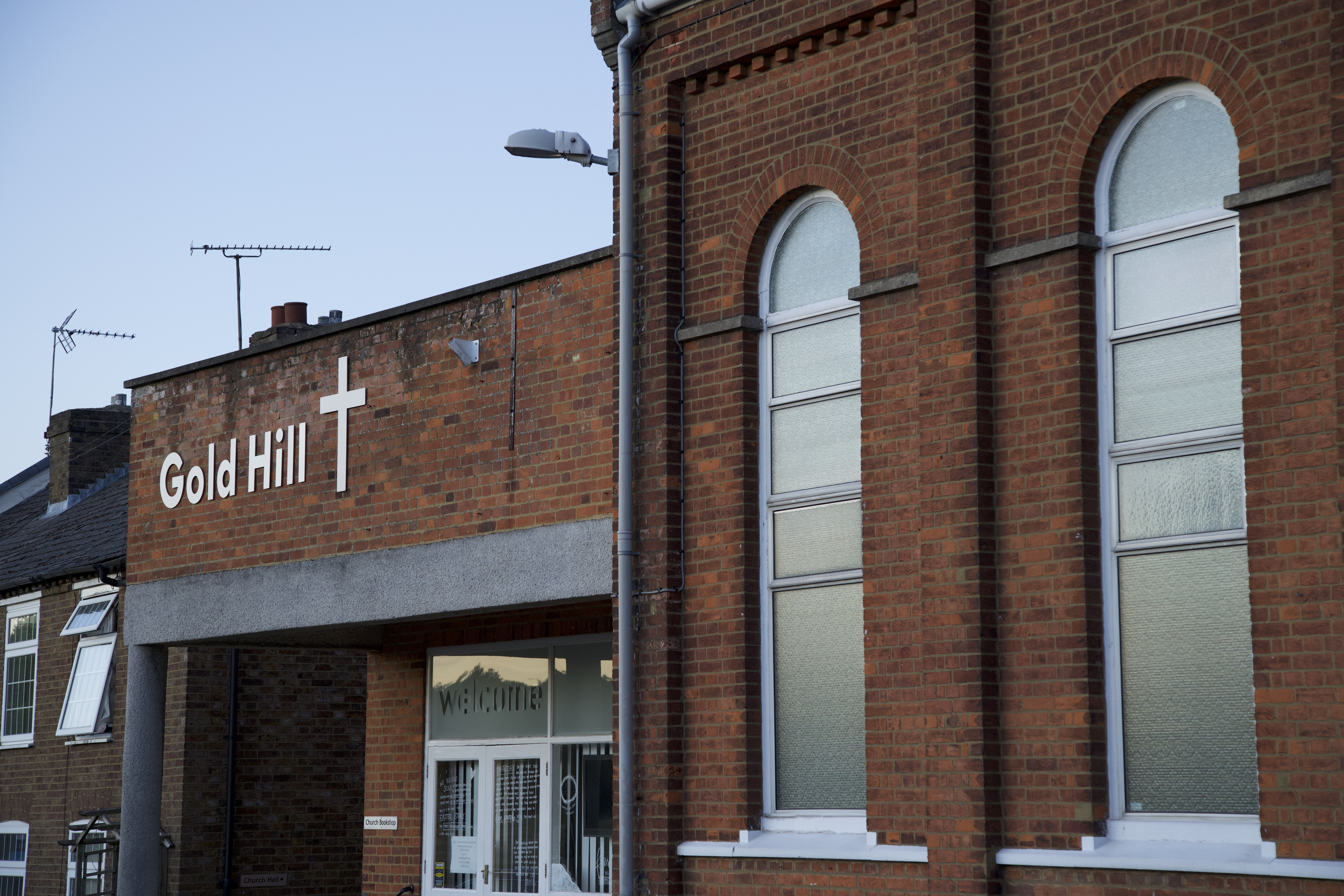|
The Menin Road
''The Menin Road'' is a large oil painting by Paul Nash completed in 1919 that depicts a First World War battlefield. Nash was commissioned by the British War Memorials Committee to paint a battlefield scene for the proposed national Hall of Remembrance. The painting is considered one of the most iconic images of the First World War and is held by the Imperial War Museum. Background In September 1914, the British government set up a propaganda department at Wellington House to influence domestic and overseas opinion. In 1916 Wellington House established a section to distribute films and publications such as ''War Pictorial'' and argued for practising artists to be sent to the Western Front. In 1916, Max Aitken had established the Canadian War Records Office (CWRO), aiming to create an artistic and photographic record of the activities of Canadian forces. In February 1918, Aitken was made head of the new British Ministry of Information (MoI) and subsequently established the Bri ... [...More Info...] [...Related Items...] OR: [Wikipedia] [Google] [Baidu] |
Oil Painting
Oil painting is the process of painting with pigments with a medium of drying oil as the binder. It has been the most common technique for artistic painting on wood panel or canvas for several centuries, spreading from Europe to the rest of the world. The advantages of oil for painting images include "greater flexibility, richer and denser colour, the use of layers, and a wider range from light to dark". But the process is slower, especially when one layer of paint needs to be allowed to dry before another is applied. The oldest known oil paintings were created by Buddhist artists in Afghanistan and date back to the 7th century AD. The technique of binding pigments in oil was later brought to Europe in the 15th century, about 900 years later. The adoption of oil paint by Europeans began with Early Netherlandish painting in Northern Europe, and by the height of the Renaissance, oil painting techniques had almost completely replaced the use of tempera paints in the majority ... [...More Info...] [...Related Items...] OR: [Wikipedia] [Google] [Baidu] |
Hooge Crater Commonwealth War Graves Commission Cemetery
Hooge Crater Cemetery is a Commonwealth War Graves Commission burial ground for the dead of the First World War located in the Ypres Salient in Belgium on the Western Front. Hooge Crater Cemetery is named after a mine crater blown nearby in 1915 (since filled in, see below) and located near the centre of Hooge, opposite the "Hooge Crater Museum" (founded in 1994) and separated from it by the Menin Road. Hooge itself is a small village on the Bellewaerde Ridge, about 4 kilometres east of Ypres in the Flemish province of West Flanders. Location In World War I, the Flanders village of Hooge belonged to one of the easternmost sectors of the Ypres Salient, which made it the site of intense and sustained fighting between German and Allied forces. From 1914 the front line of the Salient ran through the Hooge area and there was almost constant fighting in the area over the next three years, during which the village was totally destroyed. [...More Info...] [...Related Items...] OR: [Wikipedia] [Google] [Baidu] |
Paintings By Paul Nash
Painting is the practice of applying paint, pigment, color or other medium to a solid surface (called the "matrix" or "support"). The medium is commonly applied to the base with a brush, but other implements, such as knives, sponges, and airbrushes, can be used. In art, the term ''painting ''describes both the act and the result of the action (the final work is called "a painting"). The support for paintings includes such surfaces as walls, paper, canvas, wood, glass, lacquer, pottery, leaf, copper and concrete, and the painting may incorporate multiple other materials, including sand, clay, paper, plaster, gold leaf, and even whole objects. Painting is an important form in the visual arts, bringing in elements such as drawing, composition, gesture (as in gestural painting), narration (as in narrative art), and abstraction (as in abstract art). Paintings can be naturalistic and representational (as in still life and landscape painting), photographic, abstract, narrative, sy ... [...More Info...] [...Related Items...] OR: [Wikipedia] [Google] [Baidu] |
War Paintings
War is an intense armed conflict between states, governments, societies, or paramilitary groups such as mercenaries, insurgents, and militias. It is generally characterized by extreme violence, destruction, and mortality, using regular or irregular military forces. Warfare refers to the common activities and characteristics of types of war, or of wars in general. Total war is warfare that is not restricted to purely legitimate military targets, and can result in massive civilian or other non-combatant suffering and casualties. While some war studies scholars consider war a universal and ancestral aspect of human nature, others argue it is a result of specific socio-cultural, economic or ecological circumstances. Etymology The English word ''war'' derives from the 11th-century Old English words ''wyrre'' and ''werre'', from Old French ''werre'' (also ''guerre'' as in modern French), in turn from the Frankish *''werra'', ultimately deriving from the Proto-Germanic *''we ... [...More Info...] [...Related Items...] OR: [Wikipedia] [Google] [Baidu] |
Paintings In The Collection Of The Imperial War Museum
Painting is the practice of applying paint, pigment, color or other medium to a solid surface (called the "matrix" or "support"). The medium is commonly applied to the base with a brush, but other implements, such as knives, sponges, and airbrushes, can be used. In art, the term ''painting ''describes both the act and the result of the action (the final work is called "a painting"). The support for paintings includes such surfaces as walls, paper, canvas, wood, glass, lacquer, pottery, leaf, copper and concrete, and the painting may incorporate multiple other materials, including sand, clay, paper, plaster, gold leaf, and even whole objects. Painting is an important form in the visual arts, bringing in elements such as drawing, composition, gesture (as in gestural painting), narration (as in narrative art), and abstraction (as in abstract art). Paintings can be naturalistic and representational (as in still life and landscape painting), photographic, abstract, nar ... [...More Info...] [...Related Items...] OR: [Wikipedia] [Google] [Baidu] |
1919 Paintings
Events January * January 1 ** The Czechoslovak Legions occupy much of the self-proclaimed "free city" of Pressburg (now Bratislava), enforcing its incorporation into the new republic of Czechoslovakia. ** HMY ''Iolaire'' sinks off the coast of the Hebrides; 201 people, mostly servicemen returning home to Lewis and Harris, are killed. * January 2– 22 – Russian Civil War: The Red Army's Caspian-Caucasian Front begins the Northern Caucasus Operation against the White Army, but fails to make progress. * January 3 – The Faisal–Weizmann Agreement is signed by Emir Faisal (representing the Arab Kingdom of Hejaz) and Zionist leader Chaim Weizmann, for Arab–Jewish cooperation in the development of a Jewish homeland in Palestine, and an Arab nation in a large part of the Middle East. * January 5 – In Germany: ** Spartacist uprising in Berlin: The Marxist Spartacus League, with the newly formed Communist Party of Germany and the Independent Social Democrati ... [...More Info...] [...Related Items...] OR: [Wikipedia] [Google] [Baidu] |
Battle Of Pilckem Ridge
The Battle of Pilckem Ridge (31 July – 2 August 1917) was the opening attack of the Third Battle of Ypres in the First World War. The British Fifth Army, supported by the Second Army on the southern flank and the French (First Army) on the northern flank, attacked the German 4th Army, which defended the Western Front from Lille northwards to the Ypres Salient in Belgium and on to the North Sea coast. On 31 July, the Anglo-French armies captured Pilckem (Flemish: Pilkem) Ridge and areas on either side, the French attack being a great success. After several weeks of changeable weather, heavy rain fell during the afternoon of 31 July. In the XIX Corps area in the centre and on the right of XVIII Corps, three reserve brigades advanced from the black line to the main objective (green line) and pressed on towards the red line, the furthest that exploitation on local initiative had been allowed for in the plan. It began to rain, cutting off the advanced British troops from view ... [...More Info...] [...Related Items...] OR: [Wikipedia] [Google] [Baidu] |
Wyndham Lewis
Percy Wyndham Lewis (18 November 1882 – 7 March 1957) was a British writer, painter and critic. He was a co-founder of the Vorticist movement in art and edited ''BLAST,'' the literary magazine of the Vorticists. His novels include ''Tarr'' (1918) and ''The Human Age'' trilogy, composed of ''The Childermass'' (1928), ''Monstre Gai'' (1955) and ''Malign Fiesta'' (1955). A fourth volume, titled ''The Trial of Man'', was unfinished at the time of his death. He also wrote two autobiographical volumes: '' Blasting and Bombardiering'' (1937) and ''Rude Assignment: A Narrative of my Career Up-to-Date'' (1950). Biography Early life Lewis was born on 18 November 1882, reputedly on his father's yacht off the Canadian province of Nova Scotia.Richard Cork"Lewis, (Percy) Wyndham (1882–1957)" ''Oxford Dictionary of National Biography'', Oxford University Press, 2004. His English mother, Anne Stuart Lewis (née Prickett), and American father, Charles Edward Lewis, separated about 1893. ... [...More Info...] [...Related Items...] OR: [Wikipedia] [Google] [Baidu] |
Gower Street, London
Gower Street is a two-way street in Bloomsbury, central London, running from Euston Road at the north to Montague Place in the south. The street is continued from North Gower Street north of Euston Road. To the south, it becomes Bloomsbury Street. University College London (UCL) and the Royal Academy of Dramatic Art (RADA) are located along Gower Street as is part of University College Hospital. UCL maintains two student residences along the street: the Arthur Tattersall and John Tovell Houses. Of the many UCL buildings along Gower Street, the Cruciform Building is especially notable, both for its striking red exterior and its obvious form, even when viewed from the road. Old boys of University College School are known as " Old Gowers" after the street where it was founded and co-located with UCL. Euston Square Underground station is located at the north end of Gower Street, at the corner of Euston Road. History Gower Street is named after Lady Gertrude Leveson-Gower, da ... [...More Info...] [...Related Items...] OR: [Wikipedia] [Google] [Baidu] |
John Nash (artist)
John Northcote Nash (11 April 1893 – 23 September 1977) was a British painter of landscapes and still-lives, and a wood engraver and illustrator, particularly of botanic works. He was the younger brother of the artist Paul Nash (artist), Paul Nash. Early life Nash was born in London, the younger son of lawyer William Harry Nash who served as recorder (judge), recorder of Abingdon-on-Thames, Abingdon and Caroline Maude Jackson. His mother came from a family with a naval tradition; she was mentally unstable and died in a mental asylum in 1910. In 1901 the family moved to Iver Heath, Buckinghamshire. Nash was educated at Langley, Berkshire, Langley Place in Slough and afterwards at Wellington College, Berkshire. He particularly enjoyed botany, but was unsure which career path to take. At first he worked as a newspaper reporter for the ''Middlesex and Berkshire Gazette'', in 1910. His brother became a student at the Slade School of Art the same year, and through his brother P ... [...More Info...] [...Related Items...] OR: [Wikipedia] [Google] [Baidu] |
Chalfont St Peter
Chalfont St Peter is a large village and civil parish in southeastern Buckinghamshire, England. It is in a group of villages called The Chalfonts which also includes Chalfont St Giles and Little Chalfont. The villages lie between High Wycombe and Rickmansworth. Chalfont St Peter is one of the largest villages, with nearly 13,000 residents. The urban population for Chalfont St Peter and Gerrards Cross is 19,622, the two villages being considered a single area by the Office for National Statistics. Gerrards Cross was once a hamlet (place), hamlet in the parish of Chalfont St Peter, but became a village and civil parish in its own right and is now a town. Chalfont St Peter is west-north-west of Charing Cross, central London and is also in close proximity to Heathrow Airport, Pinewood Studios, Pinewood and Elstree Studios, Elstree film studios, and the motorway network (M25 motorway, M25, M40 motorway, M40, M1 motorway, M1 and M4 motorway, M4). History Early history At the time ... [...More Info...] [...Related Items...] OR: [Wikipedia] [Google] [Baidu] |
Zillebeke
Zillebeke (also known as Zellebeck) is a village in the Flemish province of West Flanders in Belgium. It is a former municipality which is now part of Ypres. History On 3 March 1914 the then municipality was granted the arms of the last Lords of Zillebeke, the Canton family, Viscounts of Winnezeele, which had in 1740 acquired the ''Ancien Régime'' estate of Zillebeke. During World War I, like other parts of Ypres, it was the site of bipartisan heroism, with Victoria Crosses being won by three soldiers in the area – John Henry Stephen Dimmer, John Franks Vallentin, and John Carmichael. The village was mentioned in the Wipers Times, the most well-known of the trench magazines that were published by soldiers fighting on the front lines of the Great War. The 1st Battalion of The Irish Guards suffered huge casualties defending the village and playing a major part in stopping the German breakthrough to the Channel Ports between 1 and 11 November 1914 as part of the First Battle o ... [...More Info...] [...Related Items...] OR: [Wikipedia] [Google] [Baidu] |









